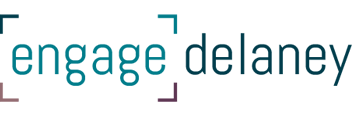P2 Technique in Action: Nominal Grouping
I found Day 4 of the IAP2 Foundations course energizing and inspiring. It was less about heavy brain power and more about movement, dialogue and storytelling.
The second phase of the course is all about public participation techniques, so today we practiced interviewing, tried a World Café, talked about online engagement platforms and experienced a Revolving Conversation.The highlight for me today, though, was the Nominal Grouping exercise we did as a class.
The IAP2 Techniques manual sets Nominal Grouping up as an “alternative to brainstorming,” and it is. But I think it’s more than that – it’s a technique that gets everyone involved in an equal way, encourages constructive group dialogue and really helps clarify and solidify a group’s priorities. It’s a highly democratic activity that helps in identifying and evaluating options. It’s inclusive and helps build consensus.
Our trainer, Jessica Delaney, started by handing out three large post-it notes to each course participant. Then she posed a question: What are the most important considerations in neighbourhood design/development? We were asked to imagine we were all residents in the same neighbourhood that was undergoing redevelopment, and write one- or two-word responses to the question.
Then we stuck all the post-its on the board, and stood back to look at this colourful collage:
The next step was a facilitated process, where Jessica led us through categorizing, or grouping, the responses into themes or similar ideas. Some of the categories were easy – safety, green space – but others were a little trickier. So instead of the facilitator just deciding where certain post-its would go, she would ask the group, for example: “Does ‘bike transportation/safety’ fit under ‘walkability’?” And we would decide together.
Here’s a photo of that process:
Throughout this conversation, the participants are standing facing the board, so we’re all facing forward. I think that helped the process feel inclusive, supportive and collaborative.
The next step is to evaluate the categories, give them a title and review if any of the post-its should be moved around. Then, each participant is given some coloured dot stickers to vote again on their top priorities. We each got three dots. Here’s a photo of the voting:
The final result is a clear sense of the overall group’s preferences of the options presented.
From a P2 facilitation standpoint, Nominal Grouping is a great technique because the analysis of the input is done as part of the exercise. Participants can also clearly see the final results.
I’m looking forward to using Nominal Grouping in my Engage Delaney project work.
- Technique: Nominal Grouping
- Level on the IAP2 Spectrum: Involve, Collaborate
- Number of participants: Ideally, less than 30
- Recommended for: Strategic planning processes (internal engagement), other group decision-making situations




